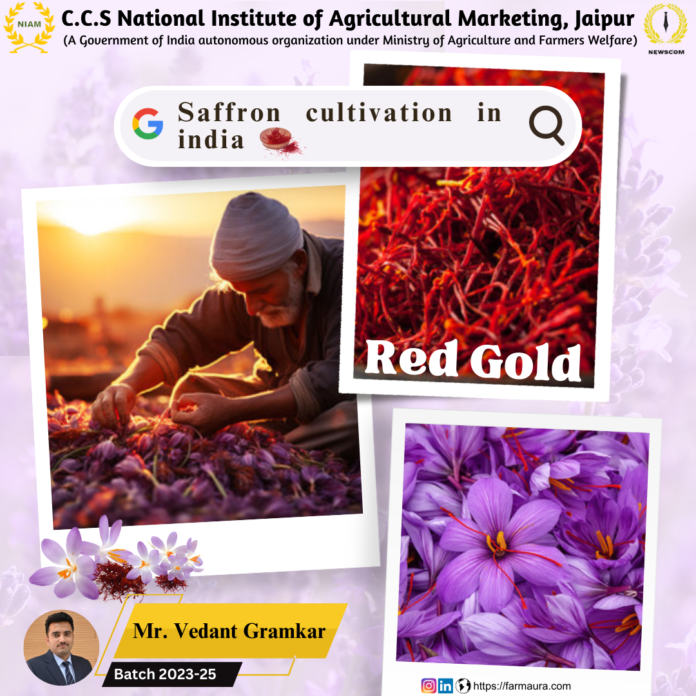Crocus sativus (saffron) or Golden spice or red gold or ‘Kesar’ belongs to the family’ Iridaceae’ and is one of the most precious spices in the world. Saffron has several medicinal properties similar as aphrodisiac, antispasmodic, antimicrobial, antibacterial, antifungal, antiseptic, and anti-inflammatory. It has anticancer medicinal parcels also, which has elevated its cost. Its smirch is used in food, medicinal, dress, perfumery, and cloth colourings diligence in colourful ways (substantially in dry form). Saffron civilization is labour ferocious taking hand labour in the colourful stages of its civilization. Its smirch needs to be precisely picked from its flower manually. Therefore, harvesting followed by recycling requires trained work hands. Thus, saffron is expensive due to its high labour demand, low yield, careful running and limited worldwide distribution. According to the report of spice board of India, Saffron is substantially cultivated in Iran, India, Greece, Morocco, Spain, Italy, Turkey, France, Switzerland, Pakistan, China, Japan, and Australia. Iran ranks first in its product and nearly 80% of the world demand for saffron is met by Iran. India contributes only 5% of the world’s total production. 90% of the country’s saffron is produced in Jammu and Kashmir(J&K) and then it’s substantially confined to Pulwama and Budgam sections. Apart from those studies of Council of scientific and industrial research (CSIR) has shown that, Saffron production in J&K has been reported to drop time by time, from 1997 to 2015 the drop in area and productivity of saffron was observed by 83% and 72% respectively.
In India, the production of saffron from J&K is 3.83 tonnes whereas its periodic demand is roughly 100 tonnes. In this country, there are geographical regions that have analogous environmental and ecological conditions to J&K and retain the possibility of introducing this crop. Identification of similar regions can be made using Ecological Niche Modelling (ENM). Thus,’ Maxent’ ENM was carried out using 103 environmental variables, 20 presence data and topographic parameters (elevation, pitch, and aspect) to find suitable regions for saffron production in unconventional areas of India. The rush and temperature were the main environmental variable impacting its cultivation.
The saffron was sown in these new modelled locals which has similar ecological conditions like J&K such as Himachal Pradesh, Uttarakhand, Arunachal Pradesh, Sikkim, Manipur, and Tamil Nadu. The quality, as well as yield of saffron produced in some of these regions, were estimated and set up at par with the saffron grown traditionally in India. Grounded on the promising results attained in this work, we’re expanding saffron cultivation to further modelled areas in India to meet our public demand. The environmental and topographic conditions for its growth and development vary between countries. In India, it’s substantially grown in temperate climate condition, where the soils are loose and well- drained.
Conclusion
Cultivation of Crocus sativus, generally known as saffron, is a labour-ferocious process that contributes to its high value and limited global distribution. While Iran dominates saffron product, India has made sweats to expand civilization beyond traditional regions, employing Ecological Niche Modelling (ENM) to identify suitable areas. Successful trials in states like Himachal Pradesh, Uttarakhand, Arunachal Pradesh, Sikkim, Manipur, and Tamil Nadu have shown promising results in terms of quality and yield. This expansion not only aims to meet domestic demand but also anticipates profitable benefits through increased employment and income for saffron growers in India.




